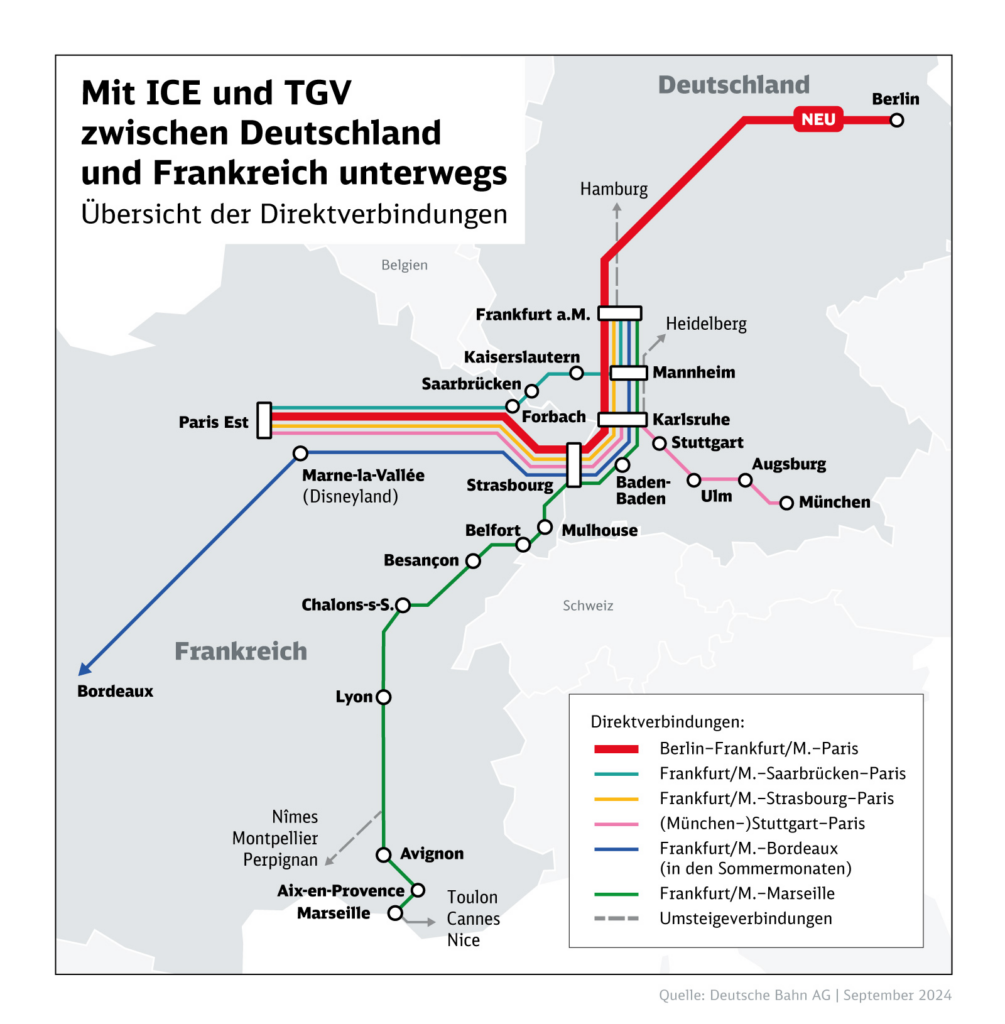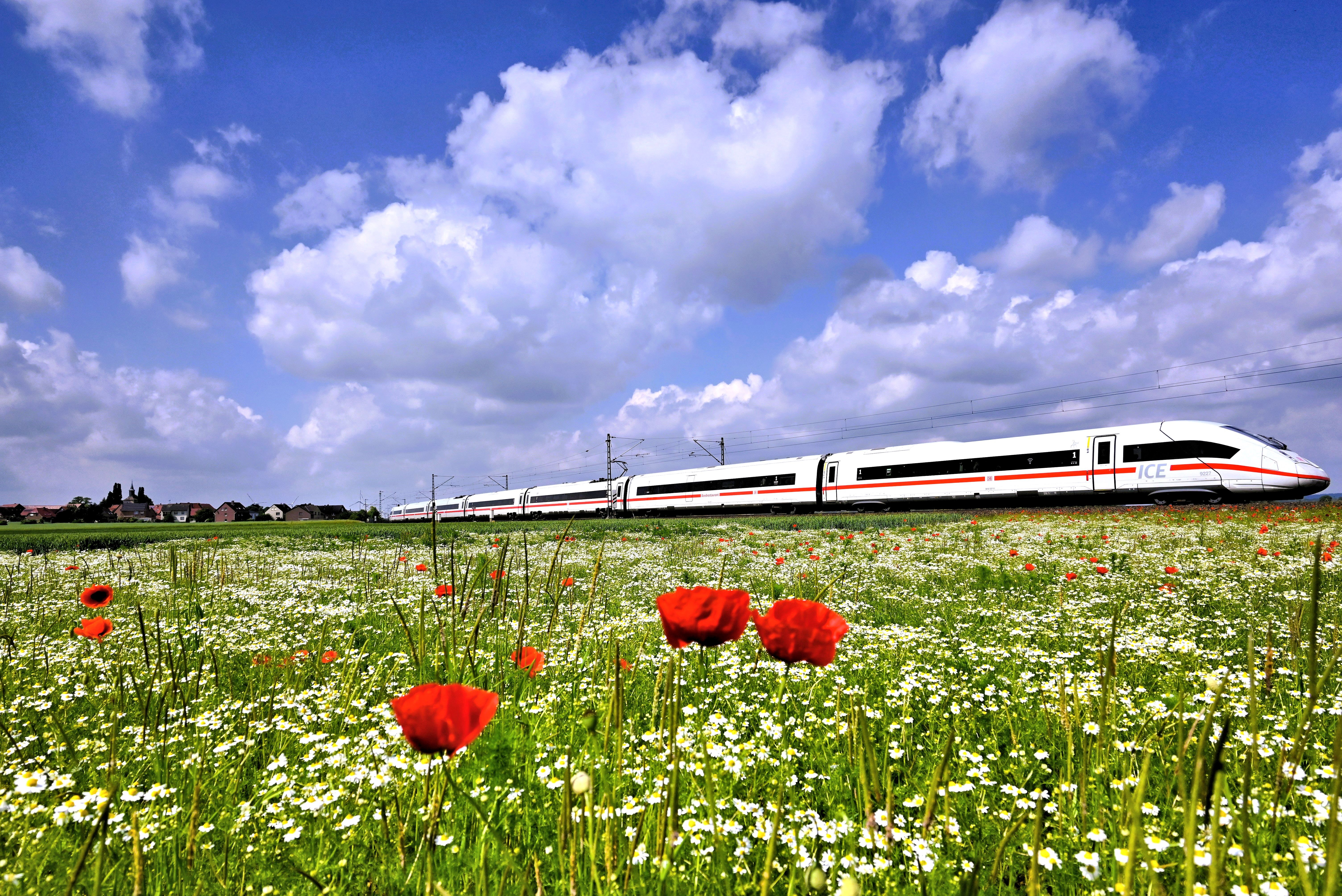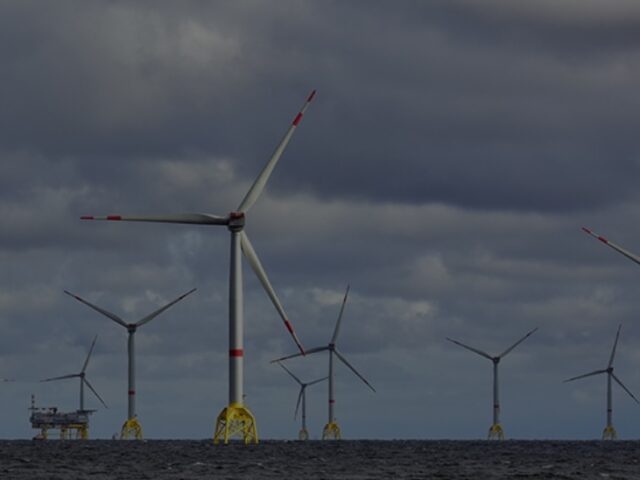Starting December 16th, a high-speed train will run daily between Paris and Berlin. French railroad company SNCF Voyageurs and German operator Deutsche Bahn will operate the line. The journey will take about eight hours in total. A stopover in Brussels or Belgium is not planned because the train will enter France or Germany via Strasbourg.
The new line is not the first direct connection between Berlin and Paris. Since the end of 2023, there has also been a night train between the two capitals, operated by the Austrian railroad company ÖBB. However, that connection lasts some 14 hours and is interrupted until the end of October, with ticket prices starting at 29,90 euros.
From €59,99 in second class
Deutsche Bahn’s 444-seat ICE high-speed trains will operate the new connection. Trains will depart from Berlin at 11:54 a.m. and arrive in Paris at 7:54 p.m. Departure from Paris is scheduled at 9:55 a.m., arriving in Berlin at 6:03 p.m.
Along the way, there will be stops in Frankfurt, Karlsruhe, and Strasbourg. This is the first time a day train connects Berlin directly to Strasbourg, the seat of the European Parliament. Ticket prices start from 59,99 euros in second class.
Starting October 16th, you can reserve a ride on the new Paris-Berlin connection. Prices will be subject to “yield management”, a pricing system that modulates amounts based on train occupancy.
Neither Deutsche Bahn, which, by the way, is facing financial difficulties, nor SNCF Voyageurs could say what proportion of tickets will be sold at 59,99 euros or the starting price of 69,99 euros in first class.
320,000 additional seats per year
High-speed trains have been running between Germany and France since 2007, for example, between Paris and Frankfurt and Stuttgart and Frankfurt and Marseille, but there was never a direct daily connection between the two capitals.
Thanks to the new ICE line between Paris and Berlin, the number of daily connections between Germany and France will rise from 24 to 26, equivalent to more than 320,000 additional seats per year.
Of course, the big challenge remains convincing people to choose the train over a faster trip by plane. A trip by plane between the two capitals takes about two hours, and tickets are available for about 110 euros if you book well in advance; otherwise, you must count on double the price.

Train 100 times more environmentally friendly
To this end, the two railroad companies are emphasizing the railroad’s environmental friendliness. For example, a train ride between the two capitals emits 2 kg of CO2 per passenger, compared to 200 kg for air travel. “People will also have to embrace the idea that the eight-hour journey represents a different lifestyle,” the two rail companies say.
To meet its climate commitments, the European Union aims to double international high-speed rail traffic by 2030 and triple it by 2050. This will require “20,000 km of additional high-speed lines” across Europe by 2050, says Michael Peterson, responsible for Long-Distance Passenger Transport at Deutsche Bahn.




Comments
Ready to join the conversation?
You must be an active subscriber to leave a comment.
Subscribe Today